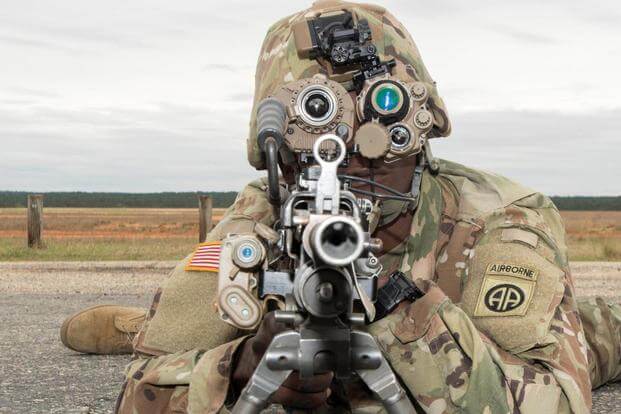The U.S. Army has successfully completed airborne drop testing of its next-generation, compact thermal weapon sight.
Soldiers from 5th Squadron, 73rd Cavalry Regiment, 82nd Airborne Division, recently conducted more than 40 static line airborne test trials with the Army's Family of Weapons Sights-Individual, or FWS-I, a breakthrough in soldier weapons targeting gear designed to communicate wirelessly with the service's latest Enhanced Night Vision Goggle.
But before the FWS-I can be fielded, Army testers must prove the system is rugged enough to survive demanding combat operations such as airborne insertions, Mike Tracy, branch chief of the Personnel Special Operations Test Branch, said in a recent Army press release.
"Individual paratroopers as well as vehicles and cargo delivery systems are bristling with technology, and technology can be frail at times," he said in the release. "To ensure these systems are both suitable and effective for issue to airborne forces often requires a technical approach."
Paratroopers worked with the Airborne and Special Operations Test Directorate at Fort Bragg, North Carolina, jumping two separate rigging configurations. After the airborne operations, the soldiers performed function checks on the systems to ensure that the sights were still bore-sighted to the weapons.
"Any time soldiers and their leaders get involved in operational testing, they have the opportunity to use, work with, and offer up their own suggestions on pieces of equipment that can impact development of systems that future soldiers will use in combat," Col. Brad Mock, director of the Airborne and Special Operations Test Directorate, said in the release.
"Operational testing is an opportunity for test units to train hard, using test dollars, while having the opportunity to offer their feedback to improve Army equipment," he added.
The FWS-I gives soldiers the ability to wirelessly transmit the sight reticle into the wide display screen of the helmet-mounted Enhanced Night Vision Goggle III and quickly fire at enemy targets, the release said. The Army plans begin fielding 36,000 FWS-Is in early 2019.
-- Matthew Cox can be reached at matthew.cox@military.com.










